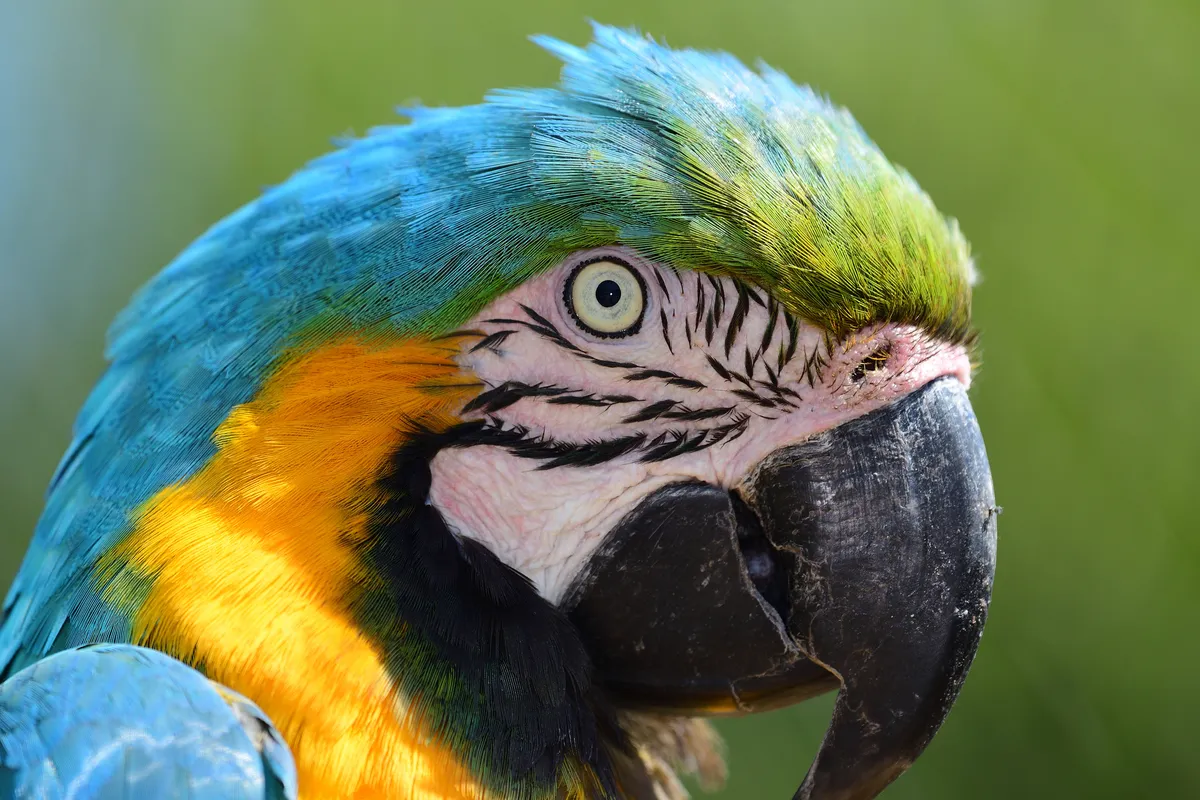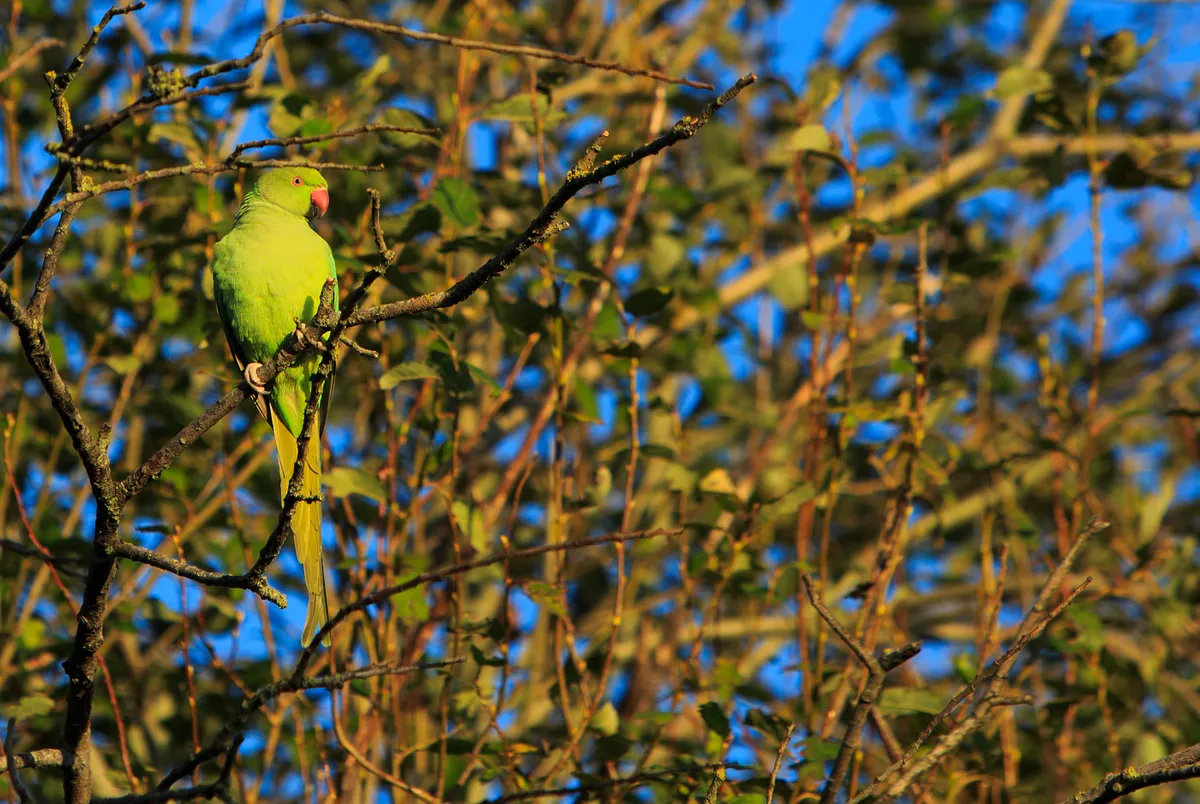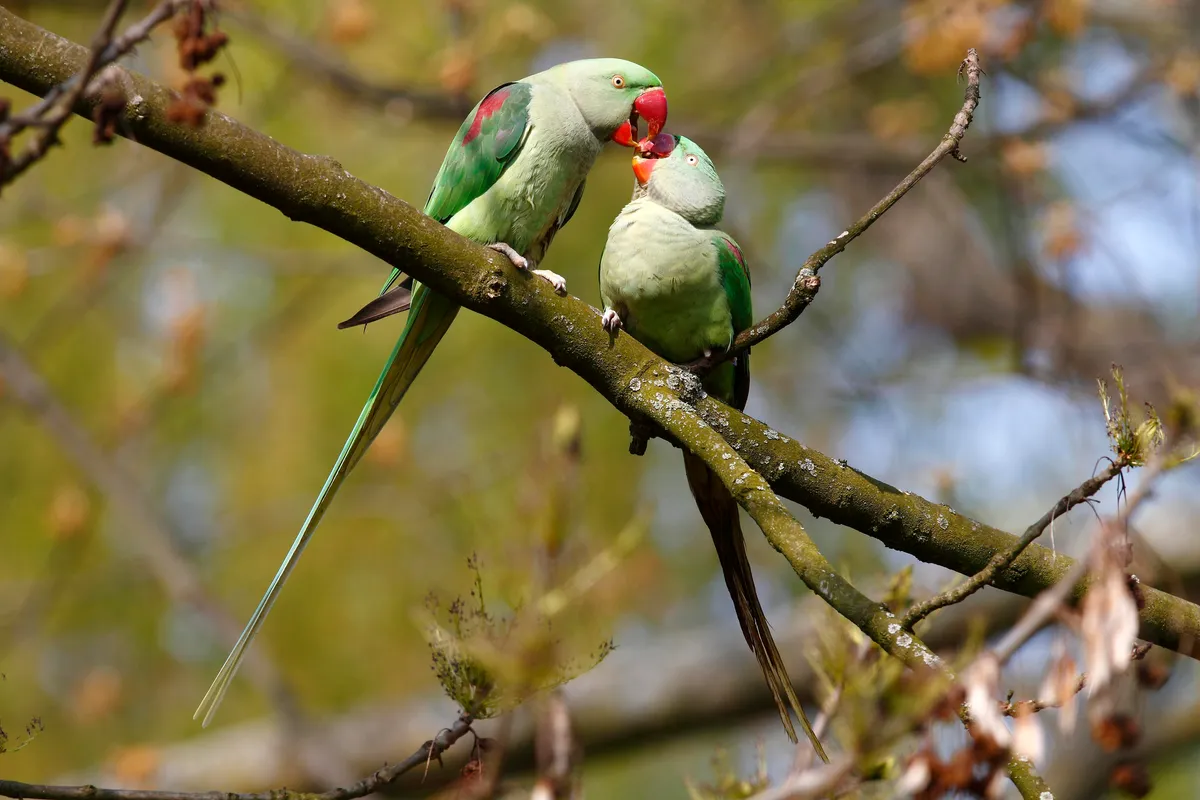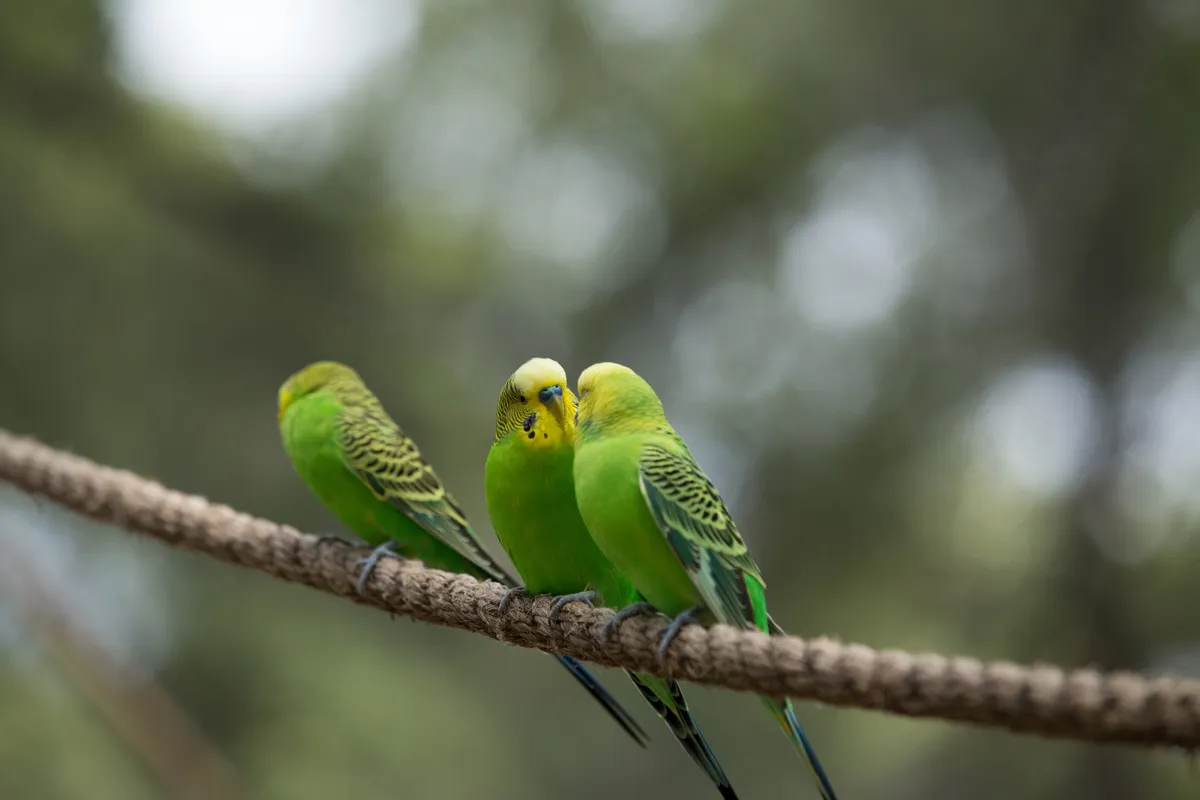How many parrot species are there?
There are almost 400 species of parrots, which are all in the Psittaciformes order, which are further split into three superfamilies. The Psittacoidea are the “true” parrots, which includes the macaws, lorikeets and budgerigars. The Cacatuoidea superfamily consists of the cockatoos. The Strigopoidea superfamily consists of the New Zealand parrots, such as the kea, kākā, and kākāpō.
How and why do parrots talk?
Parrots are among the world’s most intelligent birds and use a complex series of vocalisations to communicate with each other, many of which are learned from members of their social group. When living with humans, parrots continue this process by mimicking our speech.
One famous African grey parrot named Alex learned a vocabulary of more than 150 different words. Incidentally, though the word ‘parroting’ implies that these birds are merely copying us, scientists working with Alex proved that he understood abstract concepts, which suggests that ‘language’ is not confined to humans.
Answered by Stephen Moss.
How intelligent are parrots?
Parrots are famous for their fierce intelligence – this may well be a driving force behind their longevity, as the species with the bigger brains in proportion to their body size tend to live the longest.
It is thought that the problem-solving abilities of the most intelligent birds enable them to navigate threats encountered throughout their lives, although it’s also possible that a long life enables the evolution of intelligence, as it provides the time required to learn and accumulate complex skills.
Answered by Stuart Blackman.
How long do parrots live for?
As a general rule, large animals live longer than small ones. Parrots, though, punch well above their weight longevity-wise. In captivity, a macaw has a similar life expectancy to a human that is 50 times as heavy, and even captive budgerigars can make it to the ripe old age of 18 or so.
Does the UK have any wild parrots?
Aside from the familiar ring-necked parakeet, found mainly in London, there may be a tiny population of monk parakeets in the UK. About 15 years ago, the species was earmarked for eradication by DEFRA due to fears of it becoming a pest. In its native Argentina it can build colonial nests on telegraph poles that reach the size of a small car, causing the poles to collapse. The birds also raid fruit farms in large flocks.
Another parrot with a fingernail grip in Britain is the Alexandrine parakeet, a denizen of south-east Asia, which sometimes appears at ring-necked parakeet roosts.
There was also once a colony of budgies on the Isles of Scilly. The birds were being fed by a resident and when he left the islands in 1975 the population died out.
Answered by David Lindo.
Where is the world’s largest parrot breeding colony?

The colony of burrowing parrots (also known as Patagonian conures) at El Cóndor, Río Negro, Argentina, claims this title. In 2003 scientists counted approximately 37,000 active nests of these gregarious green and yellow birds on the sandstone cliffs along this 12km stretch of Atlantic coastline.
The birds nest in pairs, excavating a tunnel leading to a nesting chamber in which they deposit their eggs. Though the population might sound healthy, the colony remains under threat from habitat loss, human disturbance and poaching for the pet trade.
Answered by Sarah McPherson.
Can parrots be altruistic?
They certainly seem to be in a study published in the journal Current Biology at the beginning of 2020.
An experiment was set up, whereby two parrots were placed in a partitioned compartment. One parrot could exchange tokens for treats – but only if the other parrot first passed the token to it.
“We found that African greys voluntarily and spontaneously help familiar parrots to achieve a goal, without obvious immediate benefit to themselves,” says study co-author Désirée Brucks from Germany’s Max Planck Institute for Ornithology.
“The study provides preliminary evidence for prosocial behaviour in grey parrots,” says Dr Irene Pepperberg, who has for many years carried out experiments studying the cognitive and communicative ability of African greys.
“The two siblings that had a very close affiliation were the most engaged here, and it will be interesting to follow them as they age and mate with other individuals. The evidence for the other, less-affiliated grey parrots is less convincing.”
In the same experiment, blue-headed macaws did not help each other.
Answered by James Fair.
Can parrots blush?
Well, this is embarrassing. Humans have long been thought to be the only animals that blush but, it turns out, we are not alone. Research suggests that certain parrots can also communicate emotional states with a rush of blood to the face.
Darwin considered blushing to be ‘the most peculiar and most human of all expressions’. But French biologists have discovered that it’s something we share with macaws.
Part of the reason for the rarity of blushing animals is that the skin is usually obscured by fur or feathers. But macaws and humans are both unusual in having bare cheeks.
Working with captive blue-and-yellow macaws, the biologists found the parrots’ white cheek skin blushes pink when they interact positively with human handlers, with whom they have made strong bonds. The colour change was often accompanied by a ruffling of the feathers on the crown and nape.

“We think the display signals a kind of state of satisfaction or pleasure, when they receive attention from their carer,” says Aline Bertin of the University of Tours.
She adds that her team also has evidence that other macaw species produce similar displays. The precise meaning of this is not yet clear, not least because next to nothing is known about how the parrots use the display amongst themselves or in the wild. But there is little reason at this stage to think that it signals embarrassment, a complex emotion that requires knowledge of what others are thinking about you.
“We know that parrots have highly sophisticated cognitive skills, comparable to primates or dolphins, but their emotional world remains unexplored,” says Bertin. “But our skin turns more or less pink in several emotional contexts,” she says. “We also observed blushing when the macaws were scared by the sudden opening of an umbrella.”
Answered by Stuart Blackman.
Main image: A rainbow lorikeet feeding. © Joao Inacio/Getty



